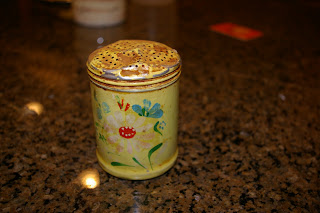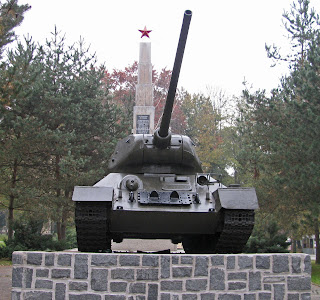Decades ago I made up my mind to love every place I lived. No matter the initial impressions, you can find beauty and pleasantness and friends anywhere.
Some places I don't remember living, such as Brooklyn New York, my birthplace, or Perryopolis Pennsylvania where my Mom stayed with me in between moves, or Sherman Oaks California where we lived for a year and a half. Actually, I remember one thing about that place--tumbling down the concrete stairs at our apartment building.
When I was two we moved to Sepulveda California and lived there until I was 13 (1956-1968). It was white-bread dullsville suburbia and life was predictable and safe and comfortable in our 1400 square foot one-story ranch-style home with a big backyard.
My life took an exciting turn when my folks found a larger (2200 sq ft) house in Valencia (Santa Clairita Valley) (I lived there 1968-1974). The area was still rural country then, and I discovered peers who were not like me. My college-educated father went off to work daily to an office job. Some of these kids came from homes that were hardly better than shacks, and their fathers were blue-collar workers, if they even had jobs at all. My high school was attended by blacks from Val Verde and Mexicans whose parents had been migrant workers before they settled down. A few of my friends had horses and was that ever fun--one of my favorite memories is the day I rode my friend's chestnut down the main drag to Thrifty Drug to buy supplies for our school project.
Then it was off to college at BYU (1973-1976) in probably the grandest setting of any university anywhere. But again, these people weren't like me. I was a brand-new Mormon. My roommates fully embraced me and helped me learn how to be a Mormon. As for the city of Provo, I didn't really care for it much, once I started working downtown. Folks were either active LDS, or they were inactive bitter anti-LDS and made life hard for the other ones.
Craig's first job was in Ridgecrest California (1977-1978) in the Mojave Desert, sandwiched between Death Valley on the east and the Sierra Nevada Range on the west. What a nice small town. There were disadvantages such as a dearth of retail establishments. On the plus side the people were humble, strong and faithful, the landscape was beautiful and wide-open and fascinating. We stayed two short years.
Meridian Idaho (1978-1984). Meridian had the deepest effect on who I am today than any place I've lived. We turned our half acre into an orchard and garden, sometimes weeding on summer nights until it was fully dark at 11 p.m. Our neighbors came from all over; there were tons of children in the neighborhood. We belonged to LDS Meridian First Ward which took in the "downtown," if a farm town actually has a downtown. These farmers had lived in their homes for 40 or 50 years or more and raised their children in two or three bedroom little boxes. They spoke out about what was right, even criticizing when appropriate. They put up with me and I came to love and appreciate them. These old folks (many of them widows) reached out to we younguns, taught us about hardship and life and canning and every practical skill. From them I learned a person didn't need much to get by; the virtues of faith and hard work were what got you by.
Portland's Rock Creek (1984). We spent such a short time in that area while waiting for our house to be built. We still have life-long friends made that year.
In December 1984 we moved 4 miles down the road to the Beaverton area, where we have lived 26 years.
Some places I don't remember living, such as Brooklyn New York, my birthplace, or Perryopolis Pennsylvania where my Mom stayed with me in between moves, or Sherman Oaks California where we lived for a year and a half. Actually, I remember one thing about that place--tumbling down the concrete stairs at our apartment building.
When I was two we moved to Sepulveda California and lived there until I was 13 (1956-1968). It was white-bread dullsville suburbia and life was predictable and safe and comfortable in our 1400 square foot one-story ranch-style home with a big backyard.
My life took an exciting turn when my folks found a larger (2200 sq ft) house in Valencia (Santa Clairita Valley) (I lived there 1968-1974). The area was still rural country then, and I discovered peers who were not like me. My college-educated father went off to work daily to an office job. Some of these kids came from homes that were hardly better than shacks, and their fathers were blue-collar workers, if they even had jobs at all. My high school was attended by blacks from Val Verde and Mexicans whose parents had been migrant workers before they settled down. A few of my friends had horses and was that ever fun--one of my favorite memories is the day I rode my friend's chestnut down the main drag to Thrifty Drug to buy supplies for our school project.
Then it was off to college at BYU (1973-1976) in probably the grandest setting of any university anywhere. But again, these people weren't like me. I was a brand-new Mormon. My roommates fully embraced me and helped me learn how to be a Mormon. As for the city of Provo, I didn't really care for it much, once I started working downtown. Folks were either active LDS, or they were inactive bitter anti-LDS and made life hard for the other ones.
Craig's first job was in Ridgecrest California (1977-1978) in the Mojave Desert, sandwiched between Death Valley on the east and the Sierra Nevada Range on the west. What a nice small town. There were disadvantages such as a dearth of retail establishments. On the plus side the people were humble, strong and faithful, the landscape was beautiful and wide-open and fascinating. We stayed two short years.
Meridian Idaho (1978-1984). Meridian had the deepest effect on who I am today than any place I've lived. We turned our half acre into an orchard and garden, sometimes weeding on summer nights until it was fully dark at 11 p.m. Our neighbors came from all over; there were tons of children in the neighborhood. We belonged to LDS Meridian First Ward which took in the "downtown," if a farm town actually has a downtown. These farmers had lived in their homes for 40 or 50 years or more and raised their children in two or three bedroom little boxes. They spoke out about what was right, even criticizing when appropriate. They put up with me and I came to love and appreciate them. These old folks (many of them widows) reached out to we younguns, taught us about hardship and life and canning and every practical skill. From them I learned a person didn't need much to get by; the virtues of faith and hard work were what got you by.
Portland's Rock Creek (1984). We spent such a short time in that area while waiting for our house to be built. We still have life-long friends made that year.
In December 1984 we moved 4 miles down the road to the Beaverton area, where we have lived 26 years.






















































